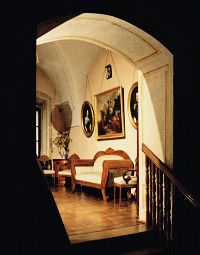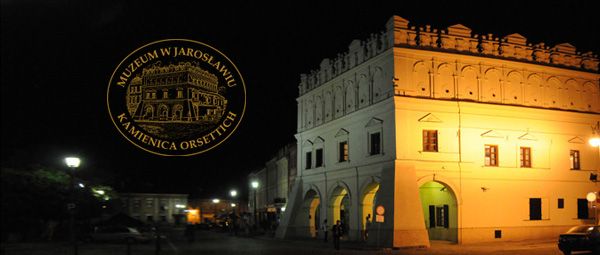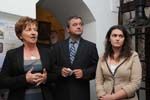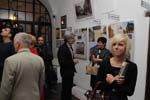At Kraszewskiego Street – September 14th, 2012 – January 23rd, 2013.
The Orsetti House Museum marks the 200th anniversary of Józef Ignacy Kraszewski's birthday with a temporary exhibition presenting his works, especially his paintings, and showing the history and heritage of the street that takes his name. To celebrate the 50th anniversary of Kraszewski's work as a distinguished artist, an author of hundreds of novels, a columnist, a graphic designer, a musician, a publisher, a bibliophile, and a social activist, the Town Council of Jarosław supported the initiative of Mayor Karol Bartoszewski and on September 25th, 1879, passed a resolution which granted the artist the title of Honorary Freeman of Jarosław. Jarosław joined a national celebration of the writer's work – following the motto "may our town, like other Polish towns, contribute to the celebration and give due ovation to the Jubilarian." In 1892, Kraszewski was the patron of the former Cygańska Street.
Cygańska Street, with the Orthodox Church of the Dominion of the Virgin Mary (16th century) and other important buildings, was renamed and flourished as Kraszewskiego Street. This was due to the well-planned policy of the municipal authorities at the time of Galicia's autonomy and the entrepreneurship and cooperation of the Jarosławian community. And, importantly, was due to the expansion of a garrison and the construction of army barracks in the neighbourhood. The significance of Kraszewskiego Street lies in its architectural diversity, multicultural community, and its mix of societal spheres: such as the Orthodox Church and cemetery, the government (the bank, the treasury, and school officials), and the quotidian quarter (i.e. the park). Poles, Jews, Russians, and the servicemen of the multinational Austro-Hungarian army lived next door to one another. They learnt how to live together respectfully among their different cultural identities, customs, and religions. Pupils of specialized and public schools alike learnt to practice tolerance for their neighbours.
The history of this multicultural street was demonstrated by the diverse historic buildings, reflecting the history of Jarosław. The Okońs, the Malinowskis, the Jenkes, the Pacaks, the Kobas, the Kornmans, the Bałabans, the Goldfingers, and the Ludkiewiczs – Jarosławian families of various nationalities and religions – built up our heritage over the centuries. Today, these ancestors are often anonymous, only recalled through monograms on balcony balustrades or over front entranceways. Distinguished artists, poets, and writers were honoured in front of the facade of the residence at 8 Kraszewskiego Street. In the Museum, there is a model of Kraszewskiego Street with original gas lamps dating back to the beginning of the 20th century and period costumes. The exhibition opened with items related to Józef Ignacy Kraszewski: his graphic portrait modelled after the painting of K. Pochwalski, a few prints presenting the landscape of the Tatra Mountains, Venice, and the Dominican monastery in Jarosław, a book of the Honorary Freemen of Jarosław with the writer's address, and his jubilee medals.
Twenty display-boards showing the elegant buildings of Kraszewskiego Street as well as architectural and urban plans were hung on the walls. The pictures and plans displayed on the boards were selected on the basis of architectural and functional aspects, stylistic diversity (Eclecticism, Secession-style, and Modernism), and connection with historical figures committed to the cause of Jarosław. The buildings on this street were designed by architects from Jarosław: S. Kornman, S. Rutkowski, and K. Kotłowski; architects from Przemyśl: S. Schafer, L. Schwarz, and S. Majerski; and T. Hoffman, an architect from Cracow.
Reproductions of architectural designs, archival postcards and photographs, portraits of the owners, and advertisements were also on display with the photographs. In the exhibit a glass plate camera was displayed on a tripod near the house of B. Henner, a distinguished Galician photographer. At the end of the exhibit, mannequins dressed in historical Austrian and Polish military uniforms, women's costumes, and a BMW motorbike from the 1930s were displayed. Artefacts characteristic of both the Jewish community, such as a tallit with a cover, a menorah, and a ritual vessel, and of the Ukrainian community, such as cloth pieces and Orthodox crucifixes, were arranged in display cases. The holy gates and the "Gate of Mercy" icon, dated around the 19th century, were placed next to them. The items were from the Regional Museum in Rzeszów, the National Museum of the Przemyśl Region in Przemyśl, the Museum in Przeworsk, the State Archives in Przemyśl, private collections, and from the Orsetti House Museum.
Zofia Kostka-Bieńkowska
home

|

















